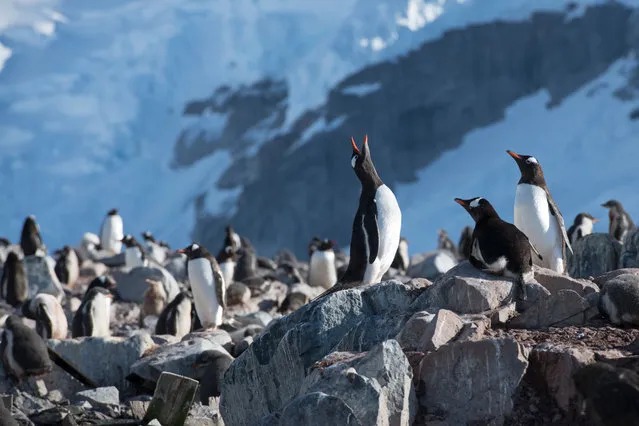
Gentoo penguin colony on Cuverville Island in Errera channel, Antarctic Peninsula. (Photo by Daniel Beltrá/Greenpeace)
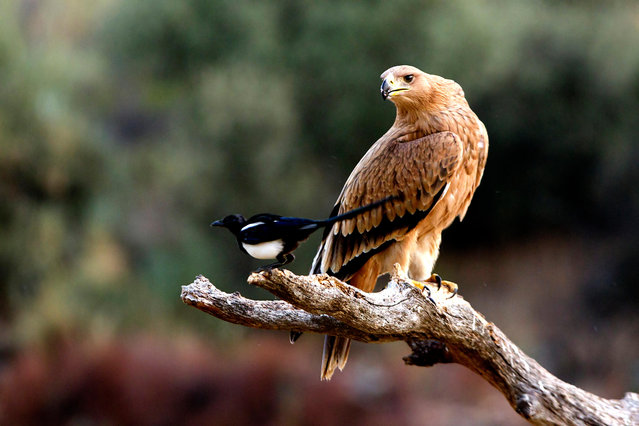
A young Spanish imperial eagle (Aquila adalberti) sits next to a magpie. (Photo by Alamy Stock Photo)
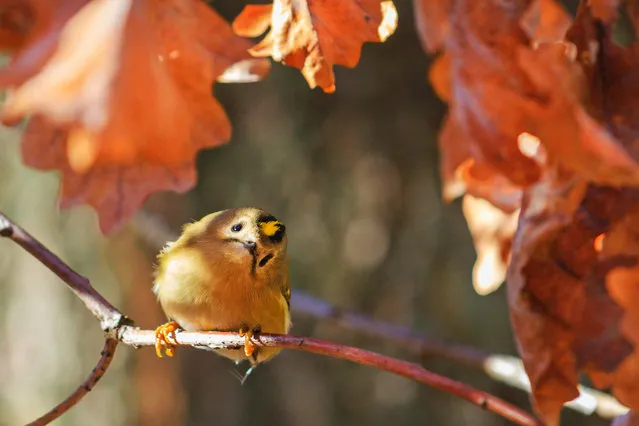
A goldcrest on an oak branch in the Czech Republic. (Photo by Kostya Pazyuk/Alamy Stock Photo)
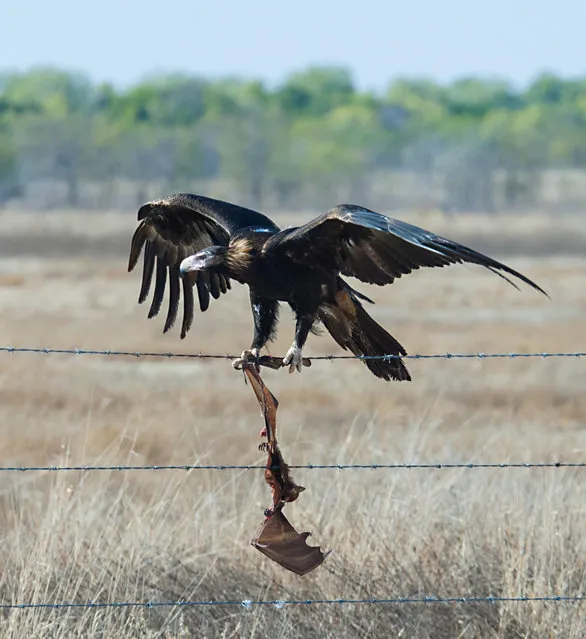
A wedge-tailed eagle (Aquila audax) with a dead bat entangled in barbed wire, Burketown, Queensland, Australia. (Photo by Geneviève Vallée/Alamy Stock Photo)
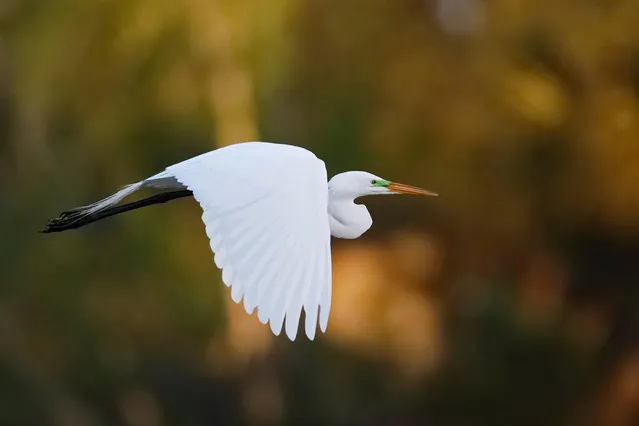
Great egret in flight, Venice, Florida, US. (Photo by Brian Lasenby/Alamy Stock Photo)
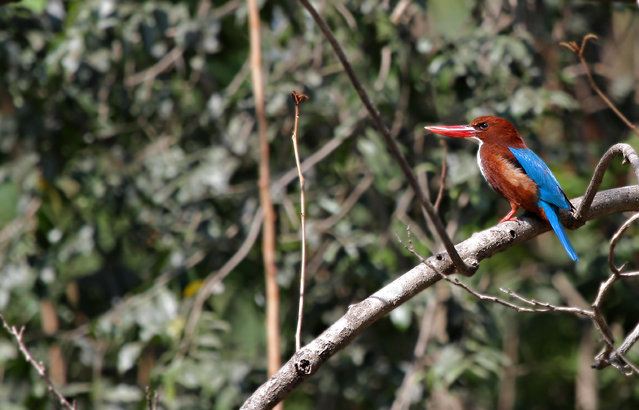
White-throated kingfisher in Pune, Maharashtra, India. (Photo by Deepashri Saraf/Alamy Stock Photo)
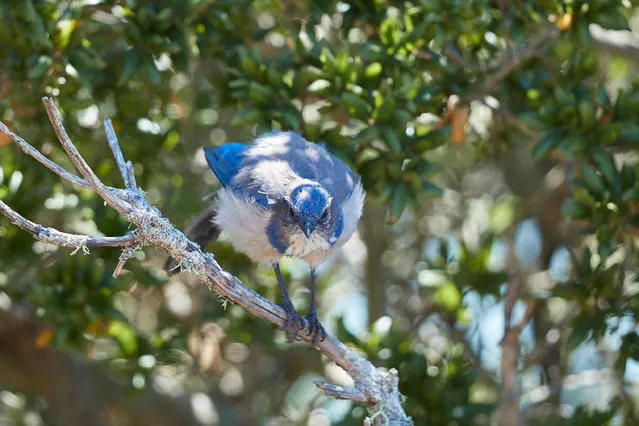
A California scrub jay (Aphelocoma Californica) on Angel Island, California, US. (Photo by Jon Lord/Alamy Stock Photo)
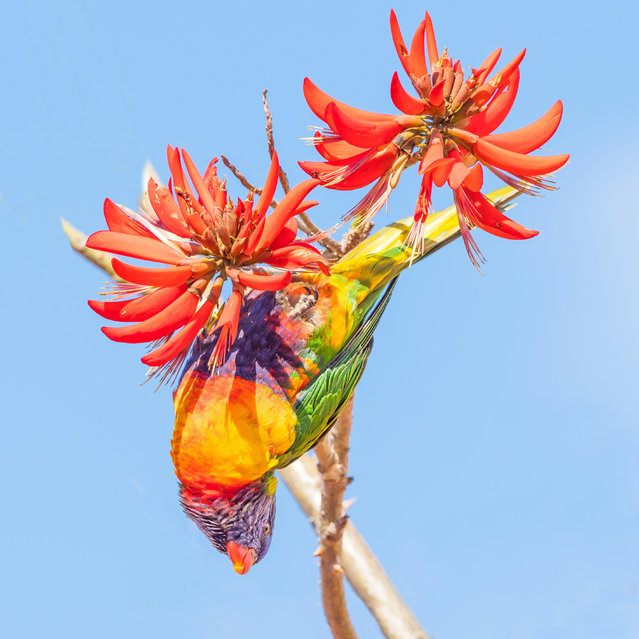
A rainbow lorikeet (Trichoglossus haematodus) – a colourful, medium-sized Australian parrot – feeds on the flowers of a coral tree. (Photo by David Steele/Alamy Stock Photo)
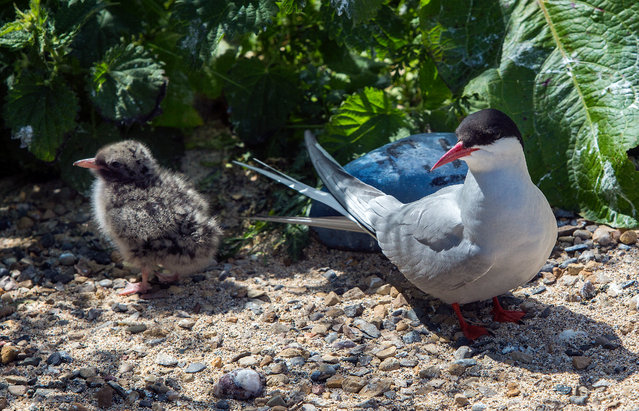
Arctic terns on the Farne Islands, Northumberland. The terns are booming in population thanks to the conservation efforts on this stretch of coast recently bought by the National Trust. (Photo by Ian Ward/National Trust)
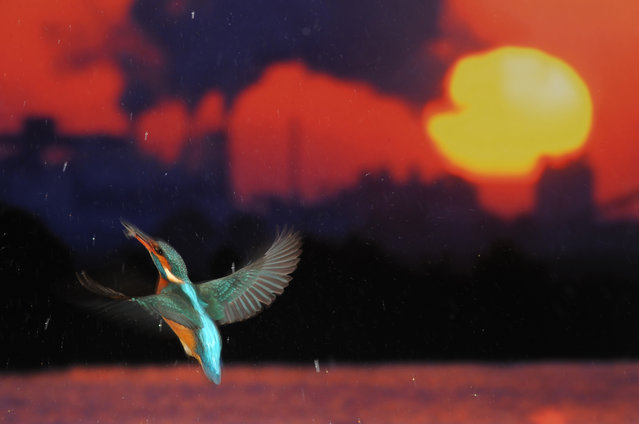
Winner of the Changing Climates prize: Jose Luis Rodriguez for “Flight for Life”. Rodriguez’s image captures a kingfisher in mid-flight, in the shadow of the severe pollution caused by the factories in the background. (Photo by Jose Luis Rodriguez/2017 Ciwem Environmental Photographer of the Year)
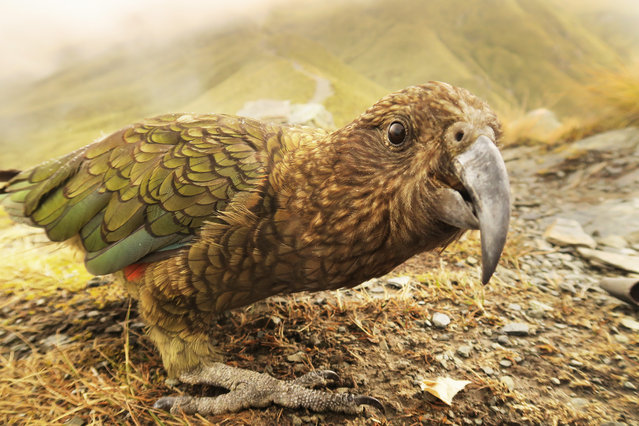
The endangered kea, captured here at the Ben Lomond Track at Queenstown in Fiordland, New Zealand, is the world’s only alpine parrot, and one of the most intelligent, if mischievous and destructive birds. (Photo by Murdo Macleod for the Guardian)
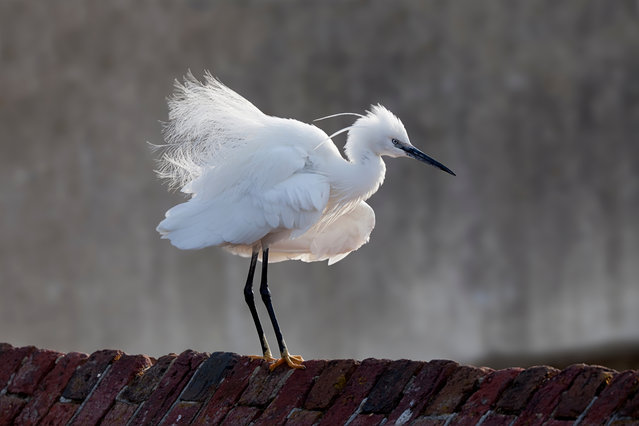
Birds preferring warmer climes, such as the little egret, have increased in numbers in the UK. But many rare breeding birds are at risk of extinction due to the climate becoming less suitable, according to a new report. (Photo by Paul Chesterfield/RSPB)
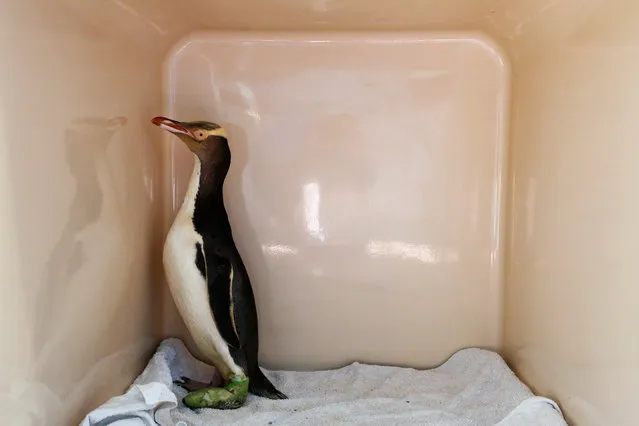
A yellow-eyed penguin recovers after a foot operation at the Dunedin Wildlife Hospital, based at Otago Polytechnic on the South Island of New Zealand. Numbers of the threatened penguin species continue to decline despite the work of conservation groups. (Photo by Murdo Macleod/The Guardian)
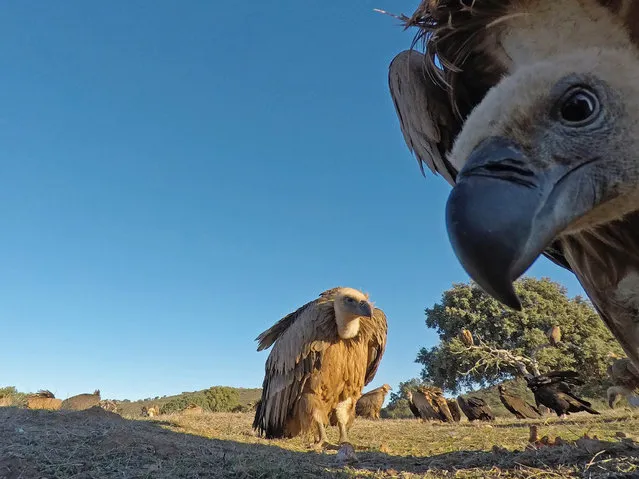
A griffon vulture peers into a hidden camera lens close to a carcass being feasted on by vultures in the San Pedro Sierra in Extremadura, Spain. (Photo by David Tipling Photo Library/Alamy Live News)
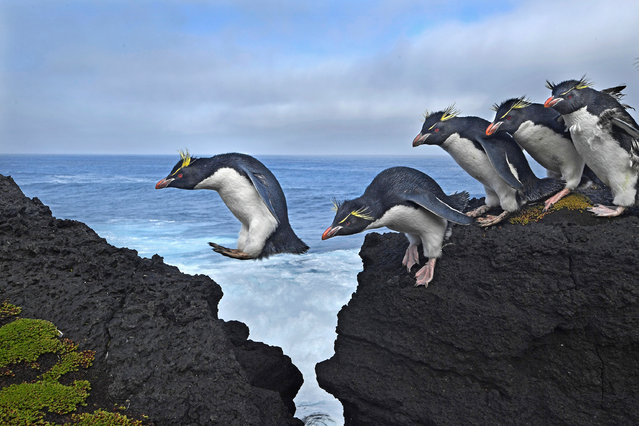
Rockhopper penguins live up to their name as they navigate the rugged coastline of Marion Island in the southern Indian Ocean. (Photo by Thomas P. Peschak)
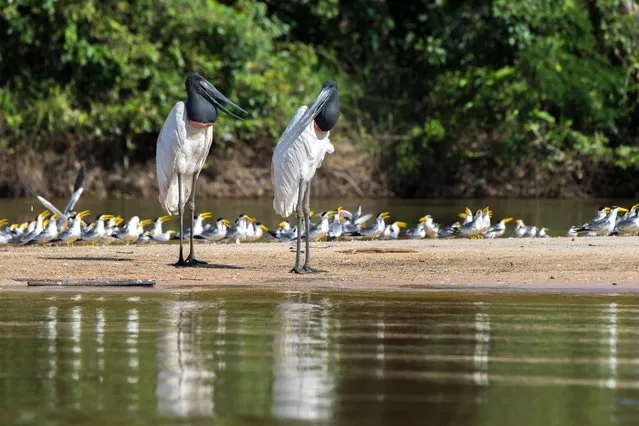
Jabiru in Brazil’s Pantanal wetlands. It’s name in Tupi-Guarani language means swollen neck, due to it’s distinctive red neck, an inflatable pouch which it uses when it feeds on fish. (Photo by Andre Dib/WWF)
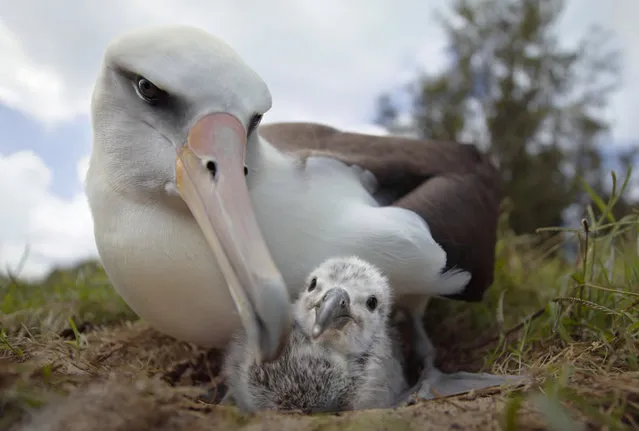
A still from Albatross, a film by Chris Jordan shot on Midway Atoll in the North Pacific Ocean that shines a light on the crisis facing the birds caused by plastic waste. (Photo by Chris Jordan/The Guardian)
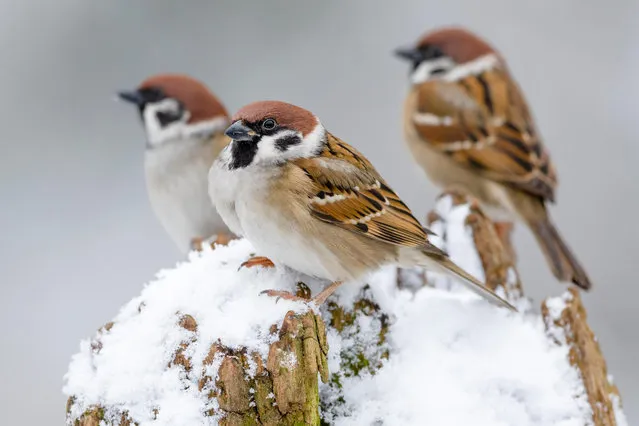
Tree sparrows perch on a snow-covered tree trunk in Almelo, The Netherlands. (Photo by Alex Huizinga/Alamy Stock Photo)
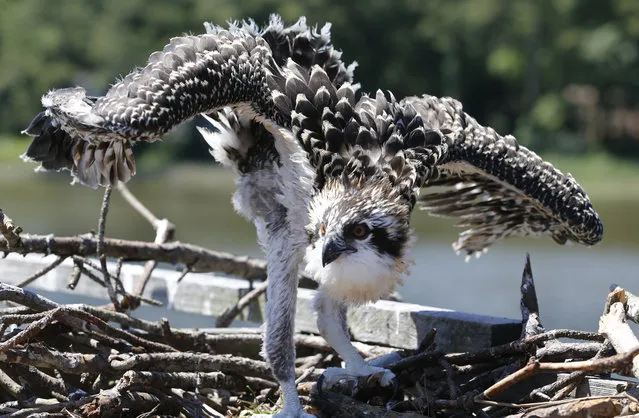
A juvenile osprey looks at surveyors as the prepare to capture him during a tagging and survey operation of the Virginia Aquarium & Marine Science Center on the Lynnhaven River in Virginia Beach, Va., on Friday, June 9, 2017. Ospreys build nests with just about anything: tree branches, stuffed animals, flip flops – even an opossum skull. (Photo by Steve Helber/AP Photo)
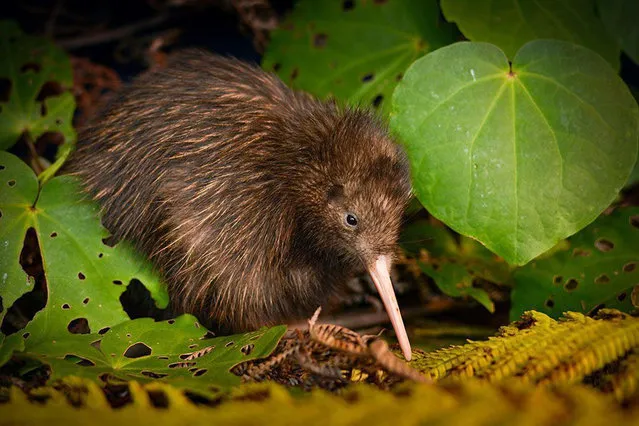
This undated photo released by International Union for the Conservation of Nature (IUCN) shows a Northern brown kiwi in New Zealand. Global conservation group IUCN’s update issued Tuesday, December 5, 2017, mostly includes news of grave threats to many species, much of it caused due to loss of habitat and unsustainable farming and fisheries practices. The IUCN said that it has upgraded the Okarito kiwi and the Northern Brown kiwi from endangered to vulnerable thanks to progress in controlling predators like weasel-like stoats and cats. (Photo by Neil Robert Hutton via AP Photo)
18 Mar 2018 00:03:00,
post received
0 comments
